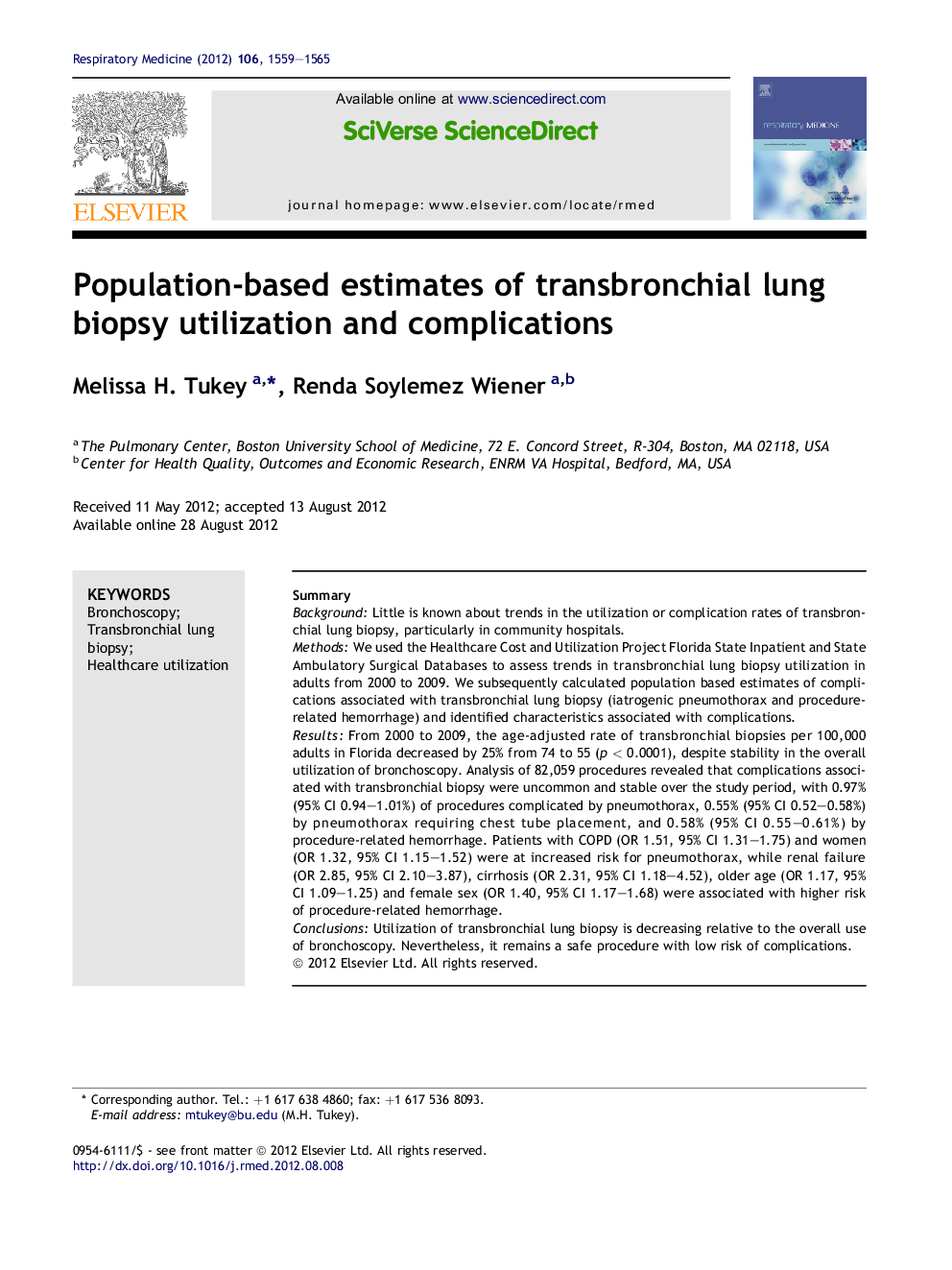| Article ID | Journal | Published Year | Pages | File Type |
|---|---|---|---|---|
| 4210386 | Respiratory Medicine | 2012 | 7 Pages |
SummaryBackgroundLittle is known about trends in the utilization or complication rates of transbronchial lung biopsy, particularly in community hospitals.MethodsWe used the Healthcare Cost and Utilization Project Florida State Inpatient and State Ambulatory Surgical Databases to assess trends in transbronchial lung biopsy utilization in adults from 2000 to 2009. We subsequently calculated population based estimates of complications associated with transbronchial lung biopsy (iatrogenic pneumothorax and procedure-related hemorrhage) and identified characteristics associated with complications.ResultsFrom 2000 to 2009, the age-adjusted rate of transbronchial biopsies per 100,000 adults in Florida decreased by 25% from 74 to 55 (p < 0.0001), despite stability in the overall utilization of bronchoscopy. Analysis of 82,059 procedures revealed that complications associated with transbronchial biopsy were uncommon and stable over the study period, with 0.97% (95% CI 0.94–1.01%) of procedures complicated by pneumothorax, 0.55% (95% CI 0.52–0.58%) by pneumothorax requiring chest tube placement, and 0.58% (95% CI 0.55–0.61%) by procedure-related hemorrhage. Patients with COPD (OR 1.51, 95% CI 1.31–1.75) and women (OR 1.32, 95% CI 1.15–1.52) were at increased risk for pneumothorax, while renal failure (OR 2.85, 95% CI 2.10–3.87), cirrhosis (OR 2.31, 95% CI 1.18–4.52), older age (OR 1.17, 95% CI 1.09–1.25) and female sex (OR 1.40, 95% CI 1.17–1.68) were associated with higher risk of procedure-related hemorrhage.ConclusionsUtilization of transbronchial lung biopsy is decreasing relative to the overall use of bronchoscopy. Nevertheless, it remains a safe procedure with low risk of complications.
